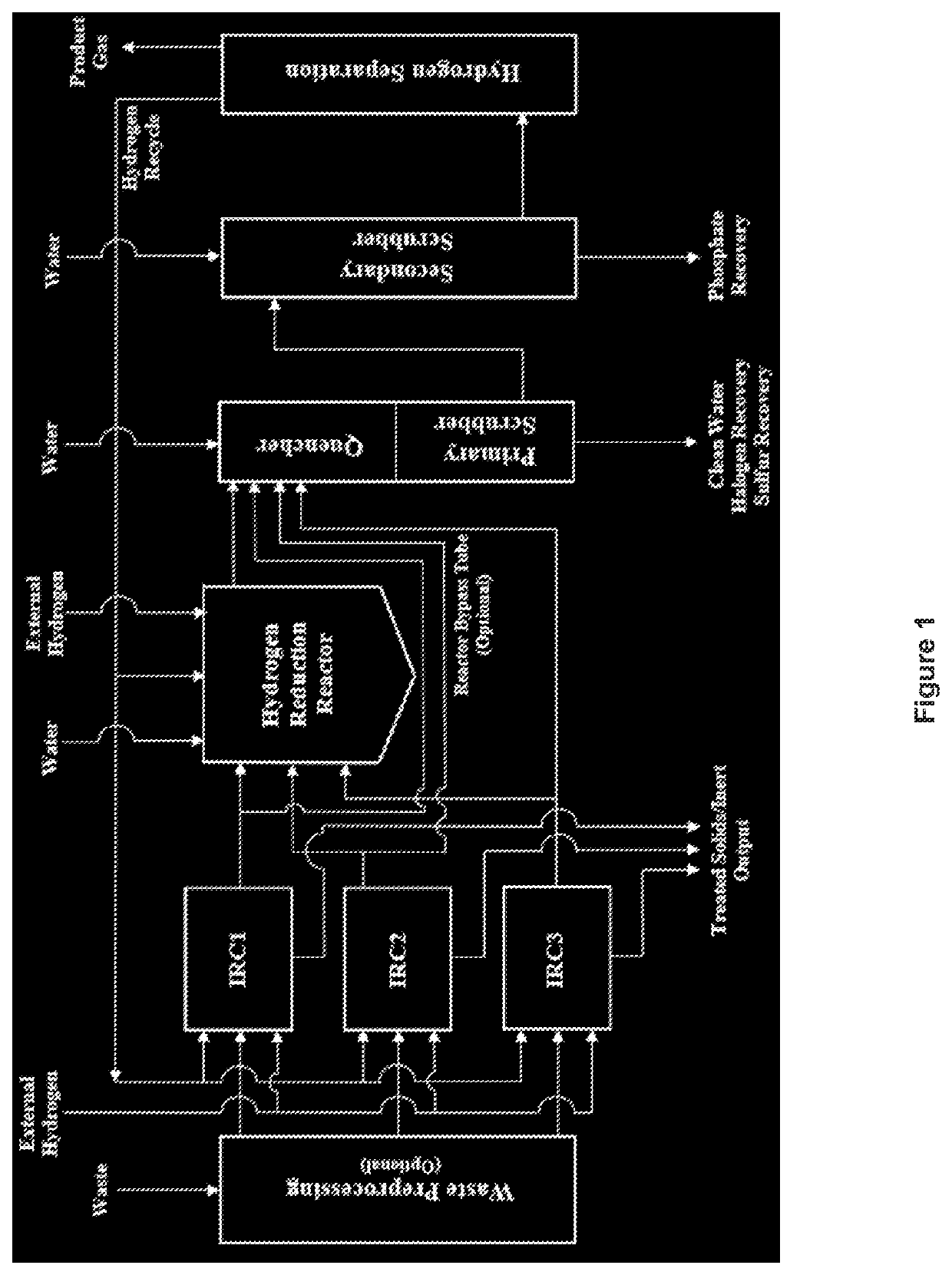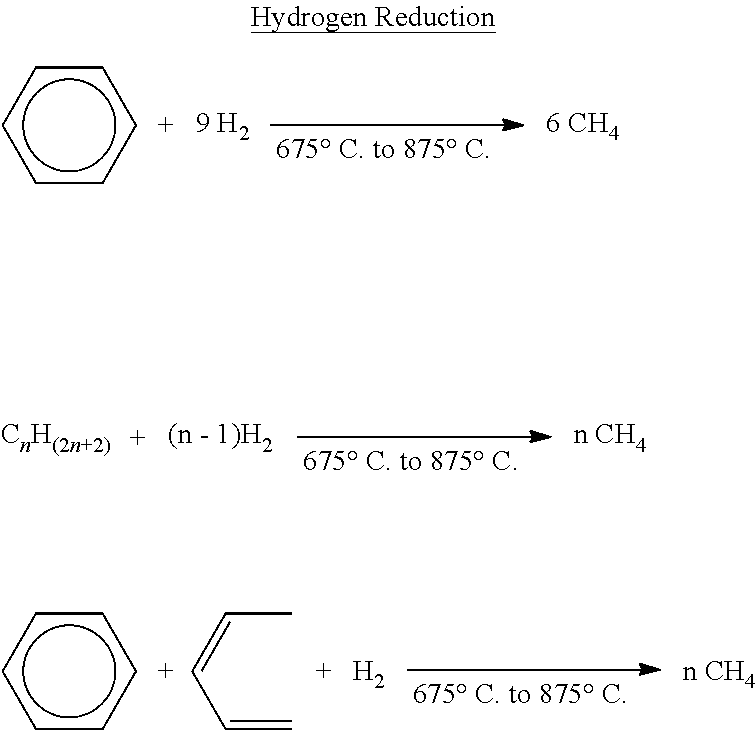Process for reducing an organic material to produce methane and/or hydrogen
- Summary
- Abstract
- Description
- Claims
- Application Information
AI Technical Summary
Benefits of technology
Problems solved by technology
Method used
Image
Examples
example 1
odelling
[0170]Two embodiments of the present disclosure are described below to provide examples of the production of methane from the conversion of two specific organic materials. The following examples are based on known chemical compositions of these materials. This information is combined with standard engineering calculations as well as process modeling of the chemical reactions. The chemical reactions have been previously described. The calculations assume that hydrogen is added as a reactant. The following efficiencies for hydrogen separation are used: 85% hydrogen recovery, 92% methane rejection, 100% CO rejection, 50% CO2 rejection, and 100% water rejection.
[0171]In an embodiment, polyethylene-based waste plastic such as Auto Shredder Residue (ASR) is converted to methane or synthetic natural gas (SNG). This material is placed in bins which are placed directly into the Initial Reduction Chambers (IRCs). ASR has the following chemical composition (in mole %) on a dry basis: 2...
example 3
n of Methane from Dry Wood Chips
[0175]Example of dry wood chips run following a ramping of the reduction chamber at 8° C. / minute from ambient to 450° C. Containers made with steel mesh were filled with dry wood chips and placed inside a sealed chamber. This chamber was purged of air with nitrogen and placed into an electrically heated oven apparatus. Hydrogen was added at a constant rate and the temperature was ramped at a constant rate of 8° C. / minute to 450° C. at 1 atm pressure. Methane gas began to be detected after the scrubber when the temperature reached 80° C. The concentrations of methane gradually increased as the temperature rose and the concentrations of hydrogen decreased corresponding to the production of methane with the highest concentrations being reached between 400 and 420° C. When 450° C. was reached the ramp rate was stopped since no further methane was being produced. No tar was formed in the scrubber or any other part of the reactor system.
PUM
 Login to View More
Login to View More Abstract
Description
Claims
Application Information
 Login to View More
Login to View More - R&D
- Intellectual Property
- Life Sciences
- Materials
- Tech Scout
- Unparalleled Data Quality
- Higher Quality Content
- 60% Fewer Hallucinations
Browse by: Latest US Patents, China's latest patents, Technical Efficacy Thesaurus, Application Domain, Technology Topic, Popular Technical Reports.
© 2025 PatSnap. All rights reserved.Legal|Privacy policy|Modern Slavery Act Transparency Statement|Sitemap|About US| Contact US: help@patsnap.com


